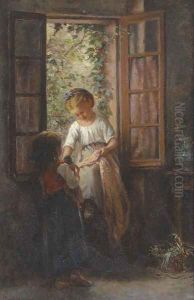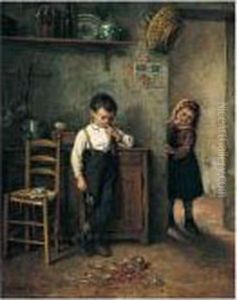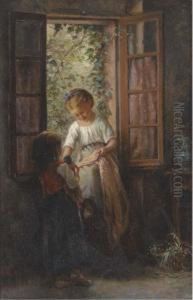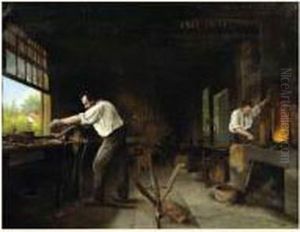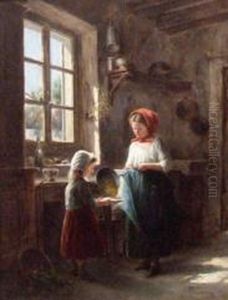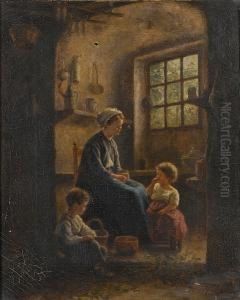Philippe Francois Sauvage Paintings
Philippe François Sauvage was a French painter and engraver born on October 10, 1744, in Lille, France. He was primarily known for his work as a decorator and his mastery in the trompe-l'œil technique, which creates an illusion of three-dimensional space on a flat surface.
Sauvage began his artistic career as a student of the painter Louis-Joseph Watteau, who was the nephew of the more famous Antoine Watteau. Under Louis-Joseph Watteau's guidance, Sauvage honed his skills in painting and developed an interest in trompe-l'œil. His talent in this technique eventually became the hallmark of his career.
In 1769, he moved to Paris to further his studies and work. There, he found opportunities to decorate various mansions and public buildings. His decorations often featured garlands, ornaments, and architectural elements painted in such a way that they appeared to be real. This skill made him a sought-after decorator during the latter part of the 18th century, especially for private mansions of the French aristocracy.
The French Revolution and its aftermath were challenging times for many artists, including Sauvage. The changing political landscape and the decline of private commissions due to the turmoil meant that artists had to adapt to new circumstances. Sauvage managed to continue his work, although on a smaller scale and with less prominence than before.
Despite the difficult period, Sauvage's talent did not go unnoticed. He was appointed as a professor at the École des Beaux-Arts in Lille, where he taught perspective—a subject that was undoubtedly close to his expertise in trompe-l'œil. His influence extended to a new generation of artists through his teaching.
Philippe François Sauvage's career spanned a period of significant social and political change in France. While he may not be as widely recognized as some of his contemporaries, his contributions to the field of decorative painting and trompe-l'œil have earned him a place in the annals of French art history. He passed away on December 1, 1818, in Lille, leaving behind a legacy of work that continues to be appreciated for its technical skill and artistic beauty.
